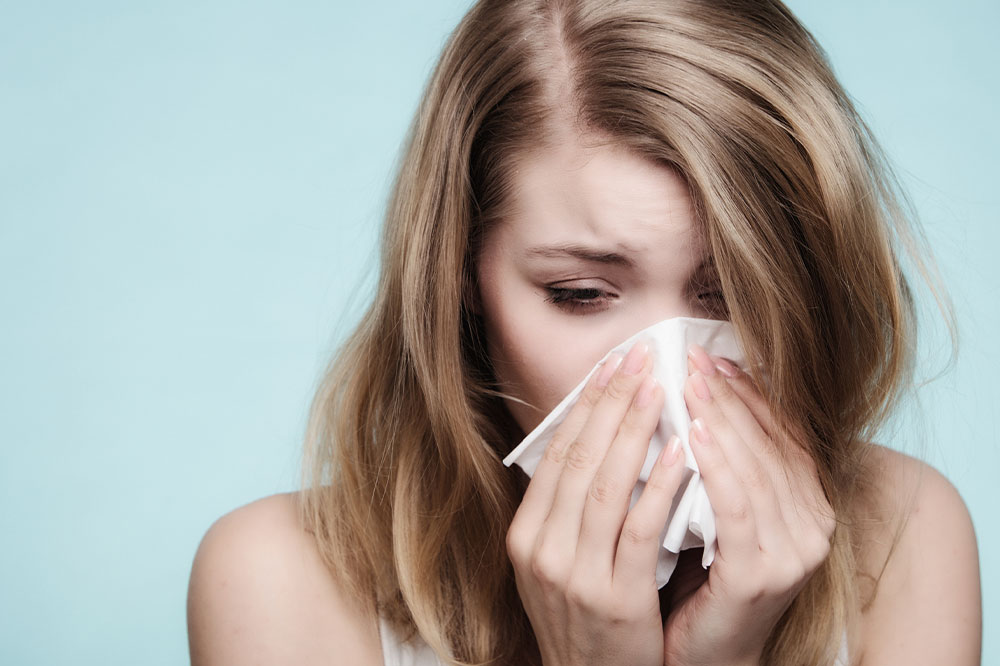10 worst cities for people with allergies

The Asthma and Allergy Foundation of America (AAFA) publishes annual reports ranking cities from best to worst for allergy patients to live in. The report evaluates various livability and healthcare aspects like pollen and mold level, the number of treatments used per allergy patient, and the ratio of certified experts to every 10,000 patients. These factors determine how safe an area is for allergy patients. Keep reading to learn about the worst allergy-prone cities.
Common irritants that trigger allergies
Various environmental factors can trigger an allergic response in a person. These include poor air quality, mold, dust, and pollen.
Pollen
Pollen from trees, grass, and weeds is a typical seasonal trigger. These airborne particles can affect one’s nasal and respiratory tract, leading to asthma, sneezing, watery eyes, itchy nose, or even fever. The content is higher in the air during the spring, summer, and fall seasons. Experts believe the pollen count will double in the next decade, affecting 30% of adults nationwide.
Air pollution
Poor air quality caused due to industrial and motor vehicle emissions can affect one’s respiratory and pulmonary function and worsen conditions like asthma and allergies.
Mold and dust
Usually affecting individuals during the winter, mold and dust mites can be found indoors in one’s bedding, stuffed animals, carpets, or furniture. They can inflame or tighten one’s lungs or make breathing hard.
10 worst cities for allergy patients
Knoxville, TN
Pollen thrives in light wind and humid and warm temperatures, the average climatic condition in Knoxville. The city also houses oak, maple box elder trees, and birch, all high in pollen content, while the valley regions trap the particles within the city.
Detroit, MI
Asthma patients are particularly vulnerable to the Detroit climate with its poor air quality, pollen score, and high asthma prevalence rate.
Oklahoma City, OK
Oklahoma City has a high concentration of mold and weeds, high levels of pollen that sweeps down the plains, strong winds, and poor air quality, all of which make it worse for allergy patients.
New Haven, CT
Pollen counts are high, and the air quality is poor in New Haven. So despite being a coastal area, New Haven is not the best city for allergy sufferers.
Springfield, MA
Springfield’s valley landscape amasses irritants and retains carbon dioxide for longer, promoting allergies. The city also ranks among the worst areas for asthma patients.
Hartford, CT
Hartford’s climate supports many pollen-producing trees, including oak, elm, maple, and birch, making it a risky location to relocate for people with allergies and asthma.
Pittsburgh, PA
Pittsburgh is known for recording high levels of industrial air pollution over the past few decades. Besides housing factories, the city also hosts many pollen-producing trees like elm, Eastern red cedars, and box elders.
Syracuse, NY
Syracuse’s spring weather of wind and heat is a breeding ground for pollen. The city also has warmer winters which can delay the allergy season.
Jackson, MS
At times, places experiencing little air pollution but high allergen levels can also be unsuitable for living. Jackson experiences high levels of allergens during the fall and spring, which can trigger asthma attacks.
McAllen, TX
McAllen city dwellers face allergy flares due to their exposure to high pollen content from Bermuda and Johnson grasses, mountain cedar trees, and even smoke drifting from Mexico after agricultural burning.
While these cities can make one more vulnerable to allergies, some lifestyle adjustments and therapies can help prevent and manage the symptoms. These preventive measures include using a mask, getting help for yard work during allergy seasons, and consulting a doctor for prompt and timely treatment.





